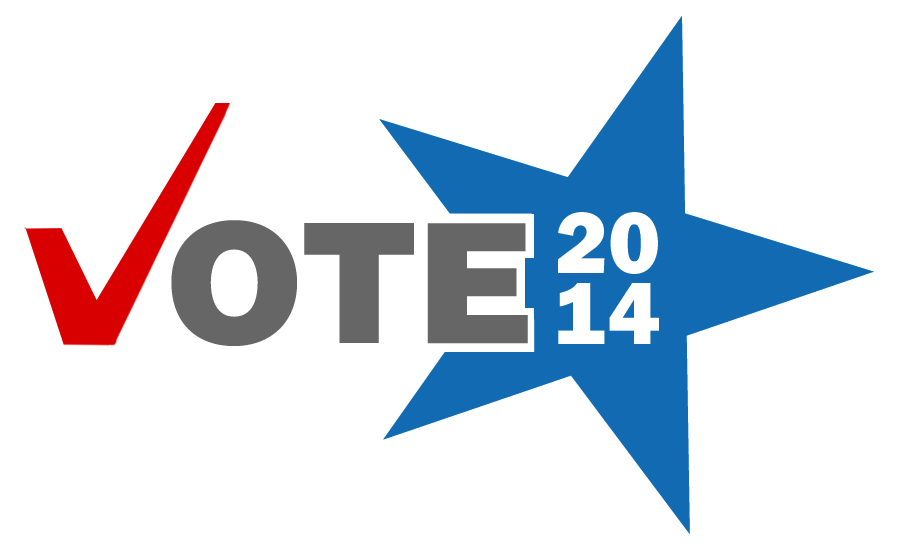
Be prepared: The PA primary is less than one week away! The importance of voting in the primary cannot be overstated, as elected officials will be facing critical environmental issues during their tenures.
Vote! Make a plan to vote prior to Election Day. Identify your polling location, and know the time of day you plan to vote. Remind friends and family about voting.
Know Your Candidates: Most candidates provide important information about their environmental voting record, or positions on environmental issues, on their candidate websites. If your local Sierra Club group has obtained a Club endorsement for a strong environmental candidate in the May primary you should find information on your group’s website. Questions about endorsed candidates may also be directed to your group’s political chair. Many groups assist campaigns by providing volunteer support through phone banking and canvassing.
Statewide Endorsement: The PA Chapter has endorsed Brad Koplinski in the race for Lieutenant Governor. | |
Click here for more information on candidate backgrounds and click here for gubernatorial candidate energy issues.
Thank you for being an environmental voter!

Joanne Kilgour, Director
Sierra Club PA Chapter |
Monday, May 19, 2014
Cast your ballot for the environment!
Go Loon-y
Our Chapter Director Joanne Kilgour (a Maine native) and Lake Erie Group Outings Leader, Tom Heigel, let their true feathers show:
Are you a skilled bird whisperer? Share your calls with us! pennsylvania.chapter@sierraclub.org
Thursday, May 15, 2014
Corbett's Smog Plan Does Little to Protect our Lungs
By Joanne Kilgour, Director, Sierra Club PA Chapter
This op-ed originally appeared in the York Dispatch.
Smog pollution is a serious health issue in Pennsylvania. More than eight million Pennsylvanians live in areas with unsafe air due to dangerous levels of smog pollution. That means nearly two-thirds of Pennsylvanians are at risk of inhaling a pollutant that is often compared to getting a sunburn on your lungs. Smog puts people at increased risk of developing asthma and heart disease, and triggers asthma attacks and heart attacks that can be fatal. When smog levels rise, air-quality alert days mean that children, seniors, and other vulnerable groups must stay inside or face serious risks to their health.
On Wednesday the American Lung Association released its
annual State of the Air Report, which found that York County residents continue
to suffer from bad air quality. The county
scored an “F” grade for smog (or ozone) pollution, and the
York/Harrisburg/Lebanon metro area ranked 64th worst in the country
out of 277 metro areas surveyed for smog pollution. This is particularly bad news for the more
than 44,000 county residents who have asthma (including over 10,000 children),
the 22,000 people with COPD (a chronic lung disease) and the 30,000 people with
heart disease.
Unfortunately for these vulnerable people, the Department of
Environmental Protection (DEP) under Governor Corbett is not helping. In April, the DEP unveiled a plan supposedly aimed
at controlling smog pollution that does nothing to limit smog-causing nitrogen
oxides (NOx) pollution from coal-fired power plants, in spite of the fact that
coal plants are the largest source of NOx pollution in the state. While the eight largest plants are capable of
cutting their average NOx emissions by about 40% using already installed
technology, the limits set in the plan would actually allow these plants to increase their smog-causing pollution without
any penalty.
These limits proposed by the DEP are three to four times
higher than limits being considered in neighboring Maryland and New York for
their coal power plants. That means Pennsylvania families could continue to
suffer, even as other states take steps to clean up their air.
York County is home to the Brunner Island power plant, which
is the 6th largest coal power plant in the state. It is also the only remaining large coal
power plant that has not installed a common control for smog-causing pollution
known as Selective Catalytic Reduction or SCR.
This technology is like a much bigger version of the catalytic converter
on your car, and can reduce smog-forming pollution by 80-90 percent. Without SCR, Brunner Island is contributing
unnecessarily to the air quality woes not only of York County, but of Lancaster
and Philadelphia, which have their own serious smog problems.
To add to the problem, the DEP proposal would allow the
operator of Brunner Island, PP&L, to average emissions over its fleet of
coal plants to comply with the already weak standard. That means that even if the overall pollution
limits were lowered, PP&L could comply by slashing emissions from its
Montour plant, nearly two hours north of York, while smog-causing emissions
continue from Brunner Island virtually unchecked. That is simply unfair to people who have to
breathe in York County, Lancaster County, and other areas directly downwind.
It is time for Governor Corbett’s DEP to live up to its name
and protect the health of all Pennsylvanians. The DEP can start by improving
their draft smog plan to include meaningful limits on smog-causing pollution
from coal-fired power plants consistent with the use of modern, pollution-cutting
SCR technology on every plant. Our
families deserve healthy air, so it’s time for Governor Corbett to cut
pollution from coal plants and ensure we can all breathe easier.
You can learn more about Governor Corbett’s proposed smog
plan, find out about attending upcoming public hearings and submit a comment
through June 30th at sc.org/pacutsmog
Labels:
air,
american lung association,
clean air act,
Governor Corbett,
smog
Thursday, May 1, 2014
Restoring Clean Water Act Protections to Streams and Wetlands
The U.S. Environmental Protection Agency (EPA) and the Army Corps of Engineers (Corps) recently proposed an important rule restoring Clean Water Act protections to streams and wetlands that protect our drinking water and reduce flooding. Many of these waters have been at increased risk of pollution and destruction for more than a decade because of inconsistent enforcement in the courts. The rule will be open for public comment for 90 days.
The Sierra Club is joined by scores of industry, conservation, hunting and fishing organizations to support this “waters of the United States” rule, which will bolster the Clean Water Act’s legal and scientific foundation, provide greater long-term clarity for landowners and protect the streams, wetlands and other waters that feed our Nation’s rivers, lakes and bays.
Why Streams and Wetlands Need Protection Now
Before 2001: Virtually all streams, wetlands, lakes and other natural water bodies were covered under the Clean Water Act in accordance with congressional intent and the long-standing Corps and EPA definitions of “waters of the United States.” The important physical, chemical and biological connections between upstream wetlands and tributaries and downstream navigable waters were accepted and presumed to exist. The Supreme Court unanimously rejected industry arguments that wetlands were not “waters of the United States,” deferring to the experts at EPA and the Corps to identify water resources the law must protect to serve the law’s clean water goals.
Since 2001: Later Supreme Court decisions, along with subsequent agency guidance issued in 2003 and 2008, called into question the status of upstream tributaries and wetlands and, as a result, have jeopardized critical water resources and fish and wildlife habitat. Taken together, these decisions have:
Ensuring a Clean Water Future
The proposed rule clarifies protections for about two million miles of streams and 20 million acres of wetlands and other waters not currently receiving full protection under the Clean Water Act. Recent scientific studies show that these waters have a significant physical, chemical, or biological connection to traditionally navigable or interstate waters. When finalized, this “waters of the United States” rule will bolster the Clean Water Act’s legal and scientific foundation, provide greater long-term clarity, and protect the streams, wetlands and other waters that feed our Nation’s rivers, lakes and bays.
Click here to download a printable postcard that you can mail to EPA Administrator McCarthy and U.S Army Corps of Engineers Lieutenant General Thomas P. Bostick.
- These updated safeguards reflect new scientific studies that show protecting these waters are important to down-stream consumers.
- Tributary streams and a wide variety of wetlands and other waters are critical to the condition of America’s waterways.
- The rule preserves existing exemptions for normal farming, mining and forestry activities for the production of food, fuel and fiber. This clean water rule clearly excludes certain upland ditches, ponds, and irrigation systems.
The Sierra Club is joined by scores of industry, conservation, hunting and fishing organizations to support this “waters of the United States” rule, which will bolster the Clean Water Act’s legal and scientific foundation, provide greater long-term clarity for landowners and protect the streams, wetlands and other waters that feed our Nation’s rivers, lakes and bays.
Why Streams and Wetlands Need Protection Now
Before 2001: Virtually all streams, wetlands, lakes and other natural water bodies were covered under the Clean Water Act in accordance with congressional intent and the long-standing Corps and EPA definitions of “waters of the United States.” The important physical, chemical and biological connections between upstream wetlands and tributaries and downstream navigable waters were accepted and presumed to exist. The Supreme Court unanimously rejected industry arguments that wetlands were not “waters of the United States,” deferring to the experts at EPA and the Corps to identify water resources the law must protect to serve the law’s clean water goals.
Since 2001: Later Supreme Court decisions, along with subsequent agency guidance issued in 2003 and 2008, called into question the status of upstream tributaries and wetlands and, as a result, have jeopardized critical water resources and fish and wildlife habitat. Taken together, these decisions have:
- Threatened drinking water supplies. Headwater and intermittently-flowing streams feed into the public drinking water systems of more than 117 million Americans.
- Removed protections for 20 million acres of wetlands, including prairie potholes and other seasonal wetlands that provide important flood protection and essential wildlife habitat nationwide.
- Put at risk 59% of all stream miles in the continental United States. Many of these streams provide critical habitat for countless fish, especially trout.
- Put at risk the people, businesses and industries that rely on clean water: Everyone wants to drink clean, pure water. Brewers advertise the purity of their source water. Fish need clean water. Anglers alone generated nearly $115 billion in economic activity in 2011, breathing life into rural communities and supporting more than one million jobs.
- Polluted water costs consumers billions of dollars a year.
Ensuring a Clean Water Future
The proposed rule clarifies protections for about two million miles of streams and 20 million acres of wetlands and other waters not currently receiving full protection under the Clean Water Act. Recent scientific studies show that these waters have a significant physical, chemical, or biological connection to traditionally navigable or interstate waters. When finalized, this “waters of the United States” rule will bolster the Clean Water Act’s legal and scientific foundation, provide greater long-term clarity, and protect the streams, wetlands and other waters that feed our Nation’s rivers, lakes and bays.
Click here to download a printable postcard that you can mail to EPA Administrator McCarthy and U.S Army Corps of Engineers Lieutenant General Thomas P. Bostick.
Labels:
army corps of engineers,
clean water act,
EPA,
streams,
wetlands
Subscribe to:
Comments (Atom)

